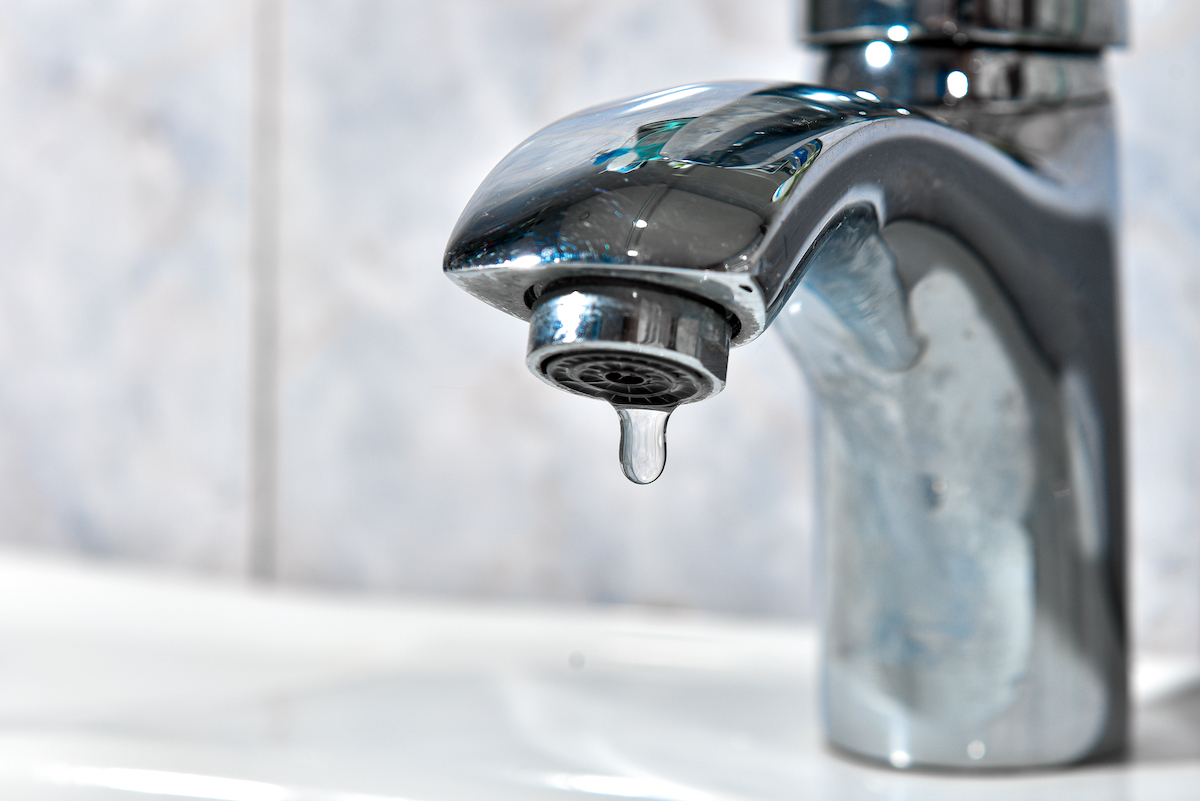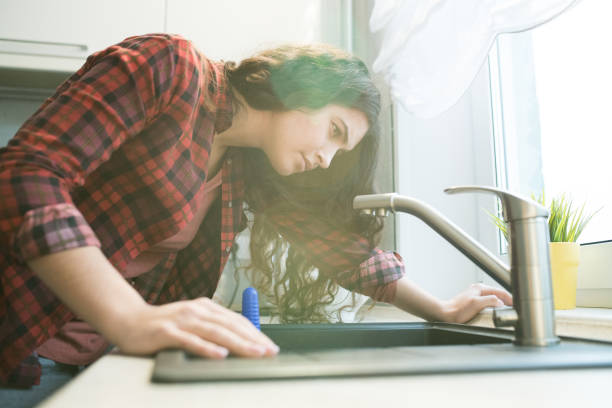Learning the Significance of Repairing a Malfunctioning Faucet
Learning the Significance of Repairing a Malfunctioning Faucet
Blog Article
This great article further down pertaining to Why Is It Important To Fix Your Leaking Tap/Faucet? is incredibly fascinating. You should check this stuff out.

Trickling taps may look like a minor aggravation, yet their effect goes beyond simply the nuisance of the sound. From drainage to incurring unneeded monetary prices and health and wellness risks, overlooking a leaking tap can cause numerous repercussions. In this article, we'll explore why it's essential to address this typical house issue immediately and effectively.
Waste of Water
Ecological Influence
Dripping faucets add significantly to water wastage. According to the Epa (EPA), a single faucet dripping at one drip per second can lose greater than 3,000 gallons of water each year. This not just pressures water resources however also influences environments and wildlife based on them.
Step-by-Step Guide to Fixing a Dripping Faucet
Devices Required
Prior to trying to repair a trickling faucet, gather the essential tools, including a flexible wrench, screwdrivers, replacement components (such as washing machines or cartridges), and plumber's tape.
Common Faucet Issues and Their Solutions
Determine the sort of tap and the specific issue triggering the drip. Typical troubles consist of damaged washing machines, corroded valve seats, or malfunctioning O-rings. Describe maker guidelines or on-line tutorials for step-by-step assistance on repair services.
Financial Prices
Raised Water Expenses
Past the environmental influence, leaking taps can blow up water expenses significantly. The built up wastage over time converts into higher energy costs, which could have been stayed clear of with timely repairs.
Prospective Home Damage
Additionally, prolonged trickling can result in harm to fixtures and surface areas surrounding the faucet. Water buildup can trigger discoloration, corrosion, and also architectural issues if left ignored, leading to added repair work prices.
Health Issues
Mold And Mildew and Mold Growth
The constant existence of dampness from a dripping faucet creates a suitable setting for mold and mildew growth. These fungis not just endanger interior air top quality but also pose health risks, particularly for individuals with respiratory conditions or allergies.
Waterborne Conditions
Stationary water in trickling taps can end up being a breeding place for microorganisms and various other microorganisms, increasing the risk of waterborne conditions. Pollutants such as Legionella germs thrive in stationary water, possibly resulting in serious ailments when consumed or inhaled.
Do it yourself vs. Expert Repair
Pros and Cons of DIY Repair Service
While some may try to repair a trickling faucet themselves, do it yourself repairs include their own set of obstacles. Without proper expertise and tools, DIY efforts can worsen the concern or lead to insufficient fixings, prolonging the issue.
Advantages of Working With a Professional Plumber
Employing an expert plumber makes certain that the underlying cause of the dripping faucet is attended to successfully. Plumbings possess the know-how and tools to identify and repair tap concerns efficiently, saving time and reducing the danger of additional damage.
Environmental Responsibility
Individual Payment to Preservation
Taking duty for taking care of leaking faucets aligns with broader initiatives toward water conservation and ecological sustainability. Every person's actions jointly make a considerable impact on maintaining valuable resources.
Lasting Living Practices
By focusing on timely repairs and taking on water-saving practices, people contribute to lasting living practices that profit both present and future generations.
Safety nets
Regular Maintenance Tips
To stop dripping taps, perform routine upkeep such as cleaning aerators, inspecting for leaks, and changing damaged parts immediately. In addition, consider setting up water-saving tools or updating to more effective components.
Relevance of Prompt Services
Dealing with leaking faucets as quickly as they're noticed prevents further water wastage and potential damage, ultimately saving both water and money in the long run.
Impact on Home Value
Understanding of Well-Maintained Home
Preserving a residential property in good condition, including attending to maintenance issues like trickling taps, enhances its regarded worth and value amongst prospective buyers or lessees.
Influence on Resale Value
Features with well-kept plumbing fixtures, including taps, command higher resale worths in the real estate market. Attending to dripping faucets can add to a positive impact during residential property evaluations and arrangements.
Conclusion
Dealing with a trickling tap goes beyond simple ease; it's an important action toward conserving water, minimizing economic prices, and safeguarding health and residential or commercial property. Whether with DIY repair services or specialist aid, doing something about it to deal with trickling taps is a tiny yet impactful way to promote responsible stewardship of resources and add to a much healthier, extra lasting future.
How to Fix a Dripping or Leaky Faucet
A leaking faucet is one of the most common problems that homeowners encounter, but it being commonplace doesn’t make it any less annoying. The constant drip drip drip of a leaking bathtub faucet, showerhead, or sink tap can disturb your home’s serenity. Left neglected, a dripping faucet can also result in higher water bills and discoloration or mold growth in your sink or plumbing fixtures.
Fortunately, you don’t have to be a trained plumber to know how to stop a dripping faucet. With some basic tools, replacement parts, and a little patience, leaky faucet repair is a breeze. In this article, we’ll explain what causes dripping faucets and how you can fix them.
What Causes a Leaking Faucet?
Kitchen and bathroom faucets come in all manner of designs, but most involve some combination of valves, O-rings, seals, and washers. The O-ring is usually the weakest link, but any one of these pieces can wear down over time. Heat, moisture, temperature fluctuations, minerals, mold, and movement can contribute to warping and corrosion, breaking the watertight seal. This just comes with the territory of being a homeowner. Everything is always subject to wear and tear, and some component parts of your appliances and fixtures need to be replaced on occasion. At least replacement O-rings are cheap!
More rarely, dripping faucets can be a symptom of excessively high water pressure. Were this the case in your home, you would probably notice that the leak is not isolated to one faucet. Water pressure issues are harder to resolve on your own. We recommend contacting a professional plumber if you suspect your water pressure is too high.
How to Fix a Dripping Faucet
Pipe wrench or monkey wrench Allen wrench set Screwdrivers Old towel or rag Shut off the water.
Before you do anything, you need to turn off the water to keep from drenching your kitchen or bathroom. You should find a valve under the sink and against the wall. Once you’ve turned this valve, try turning the faucet on to confirm that the water source has been cut off.
If you can’t locate your local valve for the faucet you’re working on, you can always shut off the water to the house at the main valve. Of course, this will prohibit anyone from using the sinks, showers, or toilets while you’re working on the faucet that’s giving you trouble.
Plug or block the drain.
You’ll be disassembling the faucet and removing some small bits of hardware. Plug the drain with a stopper or rag to avoid the possibility of a small screw falling into your P-trap.
Take apart the faucet assembly.
There are several varieties of kitchen and bathroom faucets, each with its own manner of assembly. For detailed instructions on how to disassemble your faucet, you can refer to the fixture’s manual or contact the manufacturer. If you know whether you have a ball, disc, cartridge, or compression faucet, you can find detailed schematics online.
In general, you need to begin by removing the faucet handles. You might notice a small screw that you’ll need to remove with a screwdriver or Allen wrench. If you don’t see any visible securing hardware, it’s likely hidden under a decorative cap that can be unscrewed or popped off with flathead screwdriver.
Remove each piece methodically, consulting a schematic when necessary. Take notes or arrange the pieces in such a way to make it easier to correctly reassemble the faucet later.
Remove the cartridge.
Once you’ve removed the handles and securing hardware, you should be able to remove the valve cartridge or stem. Some cartridges will slide right out. Other faucet models will require you to loosen a nut with a pipe wrench before you can remove the valve stem.
Examine the exposed hardware.
With the cartridge or stem removed, inspect the component parts. Check the rubber O-rings for wear and tear. Also examine the seat washer for corrosion or other damage. These pieces are usually the responsible parties for a dripping faucet, but it’s worth inspecting the other component parts while you have the faucet disassembled.
Find replacement parts.
Once you’ve identified which faucet component has failed, find an identical replacement. Your local hardware store should have O-rings, seat washers, and other standard components in stock. If you have a luxury or uncommon faucet, you may have to contact the manufacturer for a replacement part.
It’s a good idea to take your old parts with you to the hardware store so you can compare them with the store’s inventory and be sure you’re purchasing the correct replacement.
Reassemble the faucet.
With your new parts in hand, reconstruct the faucet and handles. Don’t be tempted to overtighten screws or nuts. You might think this could create a better seal, but it can instead damage or bend a delicate part of the assembly and create a new problem for you.
Turn on the water and test the faucet.
The only thing left to do is test your work. Unplug the sink, turn the water back on, and try the faucet. Congratulate yourself on a job well done!
https://www.libertyhomeguard.com/how-to-fix-a-dripping-or-leaky-faucet/

We hope you enjoyed our topic about . Thank you for taking the time to browse our content. Please set aside a second to share this article if you appreciated it. I am grateful for being here. Please check our blog back soon.
Report this page